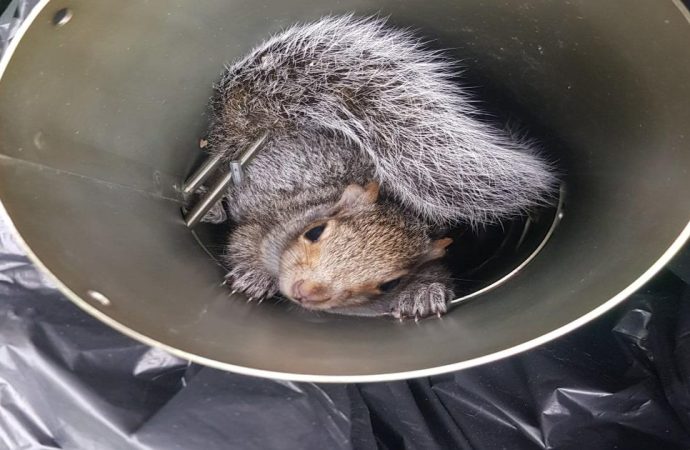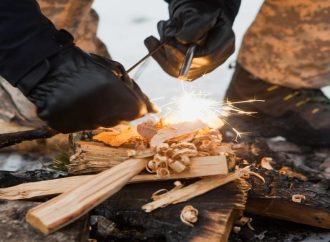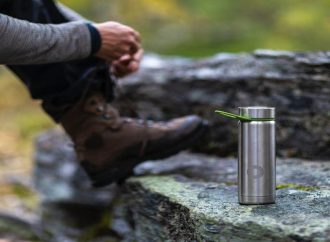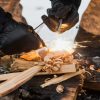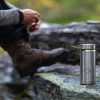Animal trapping refers to the process in which a wild animal is trapped in a device that is laid down for the purpose of food, fur, or pest control. This process is useful for preppers as trapping for survival provides a way in which you can find a source of food without actively having to
Animal trapping refers to the process in which a wild animal is trapped in a device that is laid down for the purpose of food, fur, or pest control.
This process is useful for preppers as trapping for survival provides a way in which you can find a source of food without actively having to go hunting, allowing you to spend time on other important tasks.
This article will look at the different methods that are used to trap animals and how to conduct these in a survival setting in the United Kingdom.
Deadfall
Deadfall traps are designed to kill the animal and are not currently legal in the UK due to cruelty laws. They have, however, been used since humans were first able to hunt and gather their food, and because they are so reliable they continue to be used today around the world.
They use the weight of a large object, typically a rock, that when triggered will fall onto the animal and crush them. Of course, the size of the rock used will cause the result to vary.
When planning and creating a deadfall trap, it is worthwhile using a rock that is around three times the size of the animal you want to trap with it, and for smaller sized animals too – don’t try and catch a deer this way.
This means that when the rock is triggered to fall, it will be large enough to kill the animal through asphyxiation. You can also lay another rock underneath, which will act like an anvil with the larger rock drops, resulting in a greater impact and quicker, more humane kill.
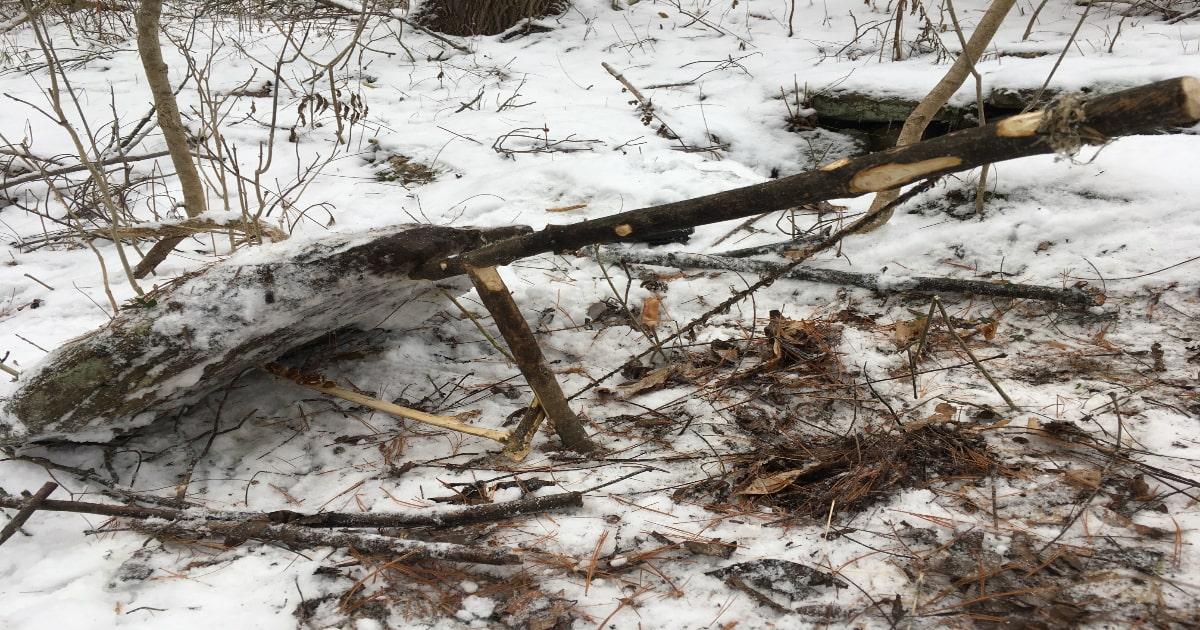
As well as a large rock, deadfall traps require the use of two sticks and some small lengths of paracord. The first stick is used to wedge the rock up and connects the rock to the ground in a diagonal direction. This should be strong enough to support the rock. The second stick is a lot smaller and is used as a trigger.
Grooves are made in the larger stick through careful wood carving techniques so that the smaller one can slot into it. This means that when the animal walks into the trap, they will knock the smaller stick, which will result in the larger one falling and bringing the rock down on them instantaneously.
The final part of a deadfall trap is some form of bait. The bait you decide to use will depend on the time of animal you want to trap.
Deadfalls are a good type of trap for preppers to use as they can be set up and left to kill prey instantly, without preppers having to do very much, other than set up the trap. This means that animals are killed without suffering, and that those using them in a survival setting can passively collect food.
An alternative to this trap is when you pull the string yourself after waiting for prey to move underneath the heavy object. Or you can simply replace the heavy object with a sturdy box or cage to catch the animal alive.
Snap Traps
Snap traps are recognised as the kind of traps you might have in your home to catch unwelcome mice or rats. They can also be a valuable asset for preppers trapping for survival as they are excellent at control rodent pest problems, and the bigger wooden rat traps can even catch squirrels.
Larger types of snap traps can also be used to trap much larger animals. These are sometimes referred to as bear traps and are placed on the ground, ready to grip onto their pray as soon as the animal walks over the trap and activates the spring mechanism.
These are typically made from metal and looks like a ring of teeth around a central mechanism. When this mechanism has weight placed on it, by the animal walking past, the metal teeth snap together, causing the animal to be completely trapped.
Due to this, the animal is unlikely to be killed when trapped. Instead, the body part in the trap, usually a leg, will be badly injured – however these kinds of ‘leg hold’ trap are not legal in the UK or even the EU.
Bear traps are useful in environments where there are a lot of plants, as this makes it easier to disguise the trap. It is also worth researching which animals live nearby so that you can locate the trap in a place that they are likely to cross, perhaps in the search for food or water.
This makes them ideal in a survival setting the UK as it is possible to make use of the fauna-rich forests that make up a large part of the country.
Cage Traps
These kinds of traps are often used by people looking to study animals or move them from one location to another. Although there are many different kinds of humane animal cage traps you can buy online, they mainly consist of a large cage on the ground or in a tree which may or may not contain bait. You should own at least one if you want to be trapping for survival successfully after SHTF.
Animals, being naturally inquisitive, will approach the trap with caution, sniffing it out. But eventually, they will maketheir way inside this foreign object and when they reach the back of the trap they touch the trip.
This causes the entrance door where they got in to shut behind them, trapping them inside. The animal is not harmed in this kind of trap, so needs to be dispatched when you return to the trap. It’s also one of the most humane traps as it does not cause physical injury in most cases, just the possible distress of being trapped in a cage.
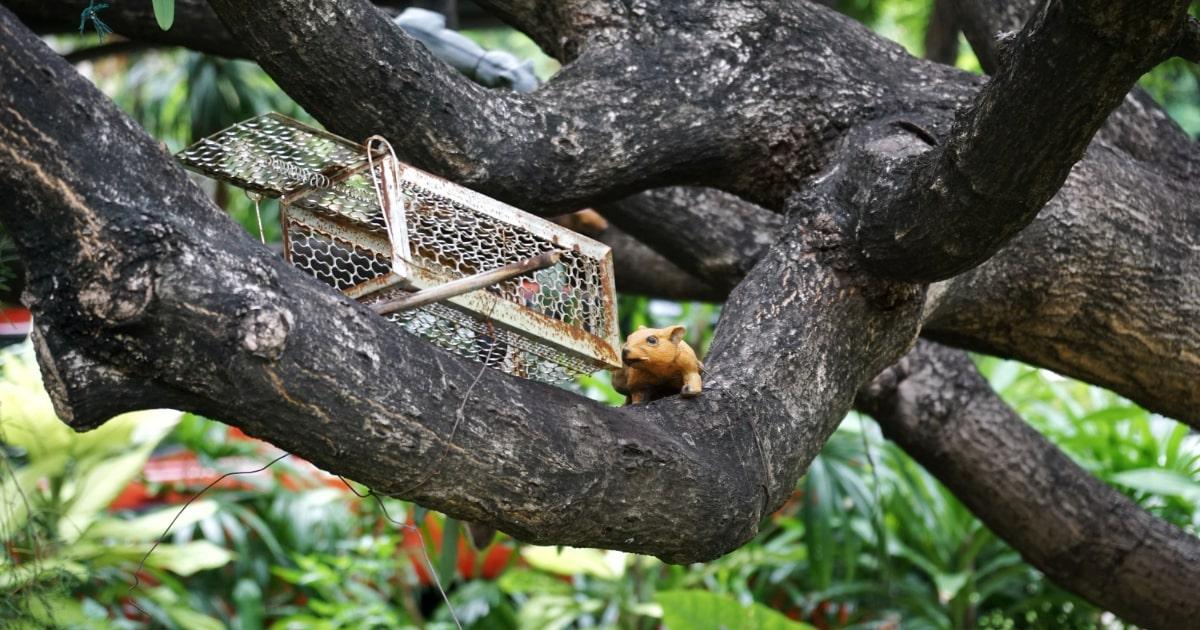
If you have caught an animal that you don’t want, such as a rat or vole, then you can simply let it go and reset the trap. What’s more, you can use these traps in the UK provided they are checked at regular intervals so as not to cause any undue suffering. You simply set it up and go.
Metal cages are best for obvious reasons, but if you have the time and knowhow you can make one out of just about anything.
Snares
Snare traps are designed to snare, or grip, onto the animal. These can be used in areas of the UK forests and countryside where there are trees and branches to utilize.
The first part of a rabbit snare trap is the rope that is used when trapping for survival SHTF situations. This will have to be something strong and flexible as it will be looped on the ground, and then when an animal sets off the trip, the loop will be pulled around them by towards the tree branch which it is attached to.
Some good materials are paracord, headphone wires, wires from cars, and natural plant fibres such as dogbane.
A better idea is to get a tin of parts such as wires and brass eyelets that you can just stash in your bug out bag, and make your own animal snares wherever you are instead of scavenging all the various pieces of kit. What’s more, snare traps are reusable many times over.
The second part that will require some crafting is the hook trigger. This consists of two sticks that can link together. This is achieved by carving a small square out of the base stick, and then carving the small stick so that it can attach onto it.
The base stick will also need to be rooted into the ground, so preppers should carve one end to help secure it.
Once both parts are prepared and the base stick is secured into the ground, wrap the rope material around a branch above it, and secure it onto the top of the smaller stick that should be wedged into the base part.
Then, with another piece of rope, create a loop and then secure this to the bottom of the smaller stick.
If carried out correctly, when an animal walks into the rope loop and knocks against the small stick, it will be knocked out of the base stick and pulled up into the branch, pulling the loop tight around the animal and bringing that with it.
Again, ensuring you have bait placed within the loop will help encourage animals to enter it.
Due to the nature of this, snare traps typically do not kill the animal. Instead, they loop around a part of them, whether that’s a leg or torso, and then hold them there until you return.
It will be up to preppers to check these traps regularly for animals so that they can kill them quickly to avoid prolonged suffering, which in many cases is a legal requirement whether trapping for survival or simply getting pests off your land.
Pit Traps
A final way of trapping for survival is by allowing it to fall into a specially created ditch or hole from which it cannot escape.
This can be achieved by using a spade or natural hole, and either leaving it open and placing bait at the bottom, or covering it with a thin layer of sticks and put the bait above it.
The hole should be deep enough to prevent the animal from climbing up the side or jumping out, such as a large plastic drum, or a hole which is thinner at the top and deeper at the bottom.
Another alternative is to use an aluminium tube to catch squirrels, as they can easily get inside for the bait but cannot jump back out because they do not have the muscle strength to jump that high vertically in an enclosed space, in addition to the fact their tiny claws cannot get a grip on the smooth metal surface.
Summary
In short, animal trapping for survival is a great way to passively trap animals as a source of food, fur, or pest control. Different traps make use of different resources and UK environments and can be used to trap a range of different animals, from small to large.
There are also other kinds of traps for smaller animals like glue traps for mice, but those aren’t really appropriate for survival as nobody wants to eat a very small, very sticky mouse or rat when there are so many more appealing animals to trap in the UK.
Although some traps are illegal in the UK, preppers would benefit from practising by creating these traps on their own so that when they are necessary in a survival setting, they will know how to build them and then put them into action straight away.

